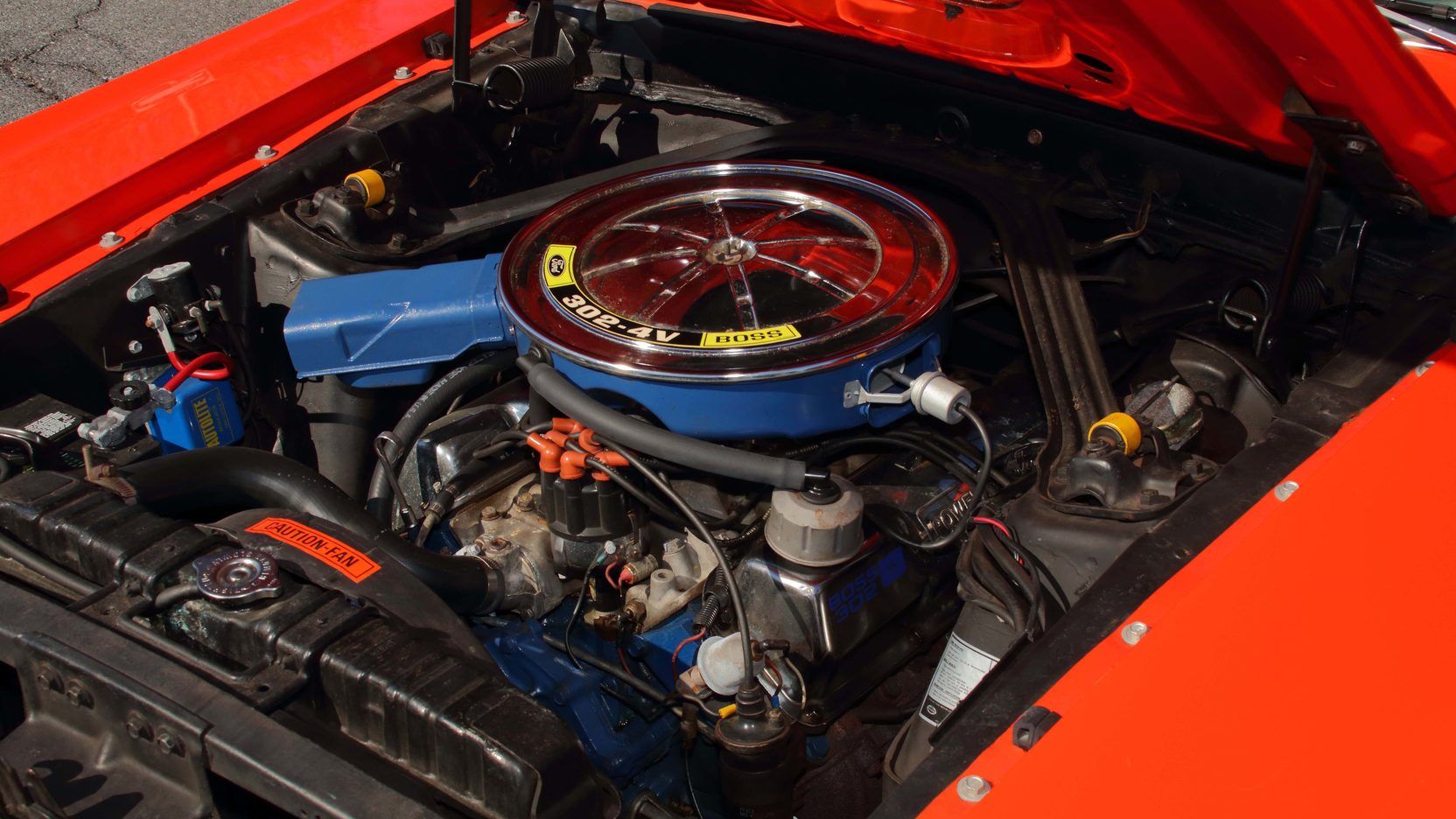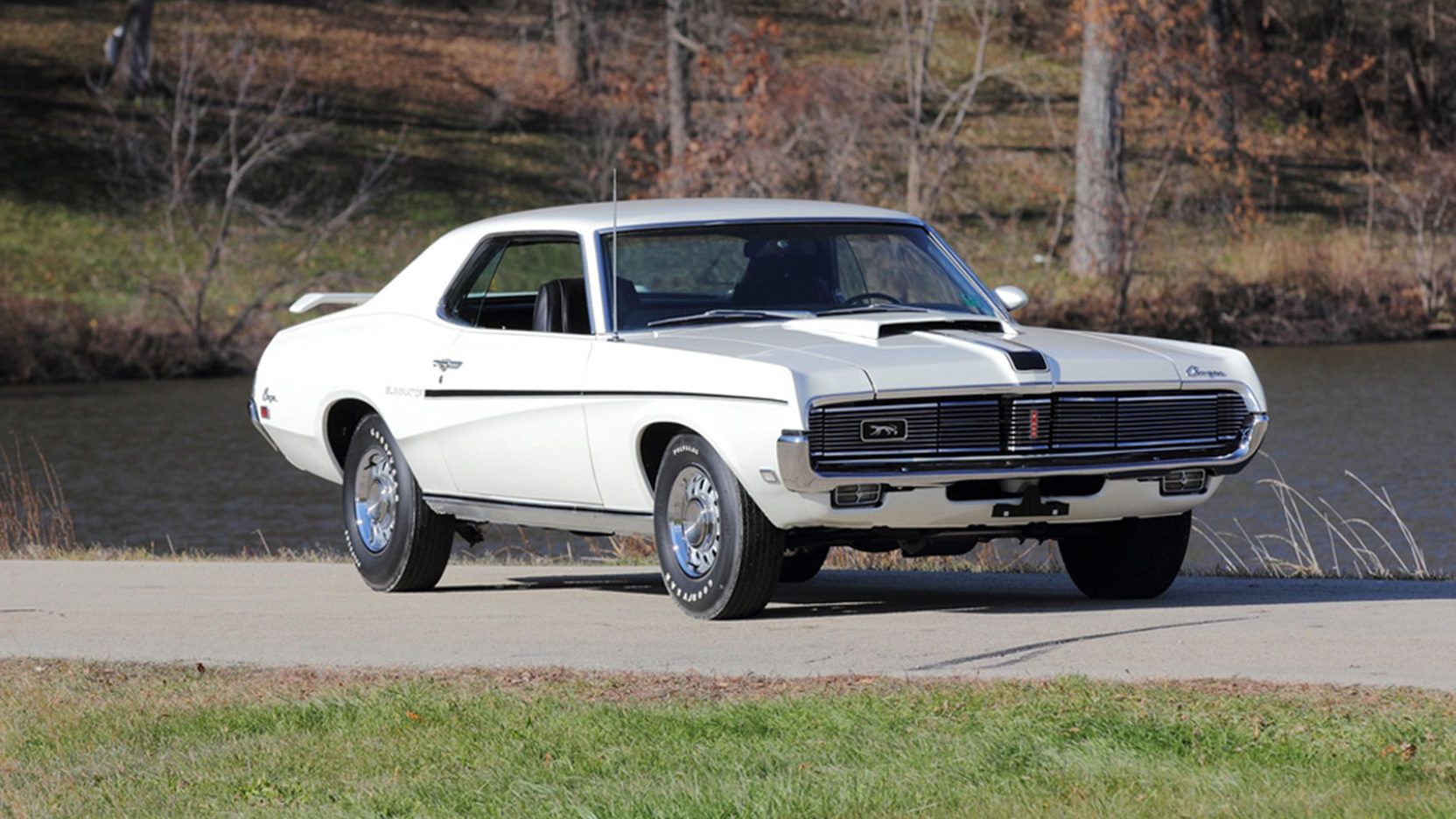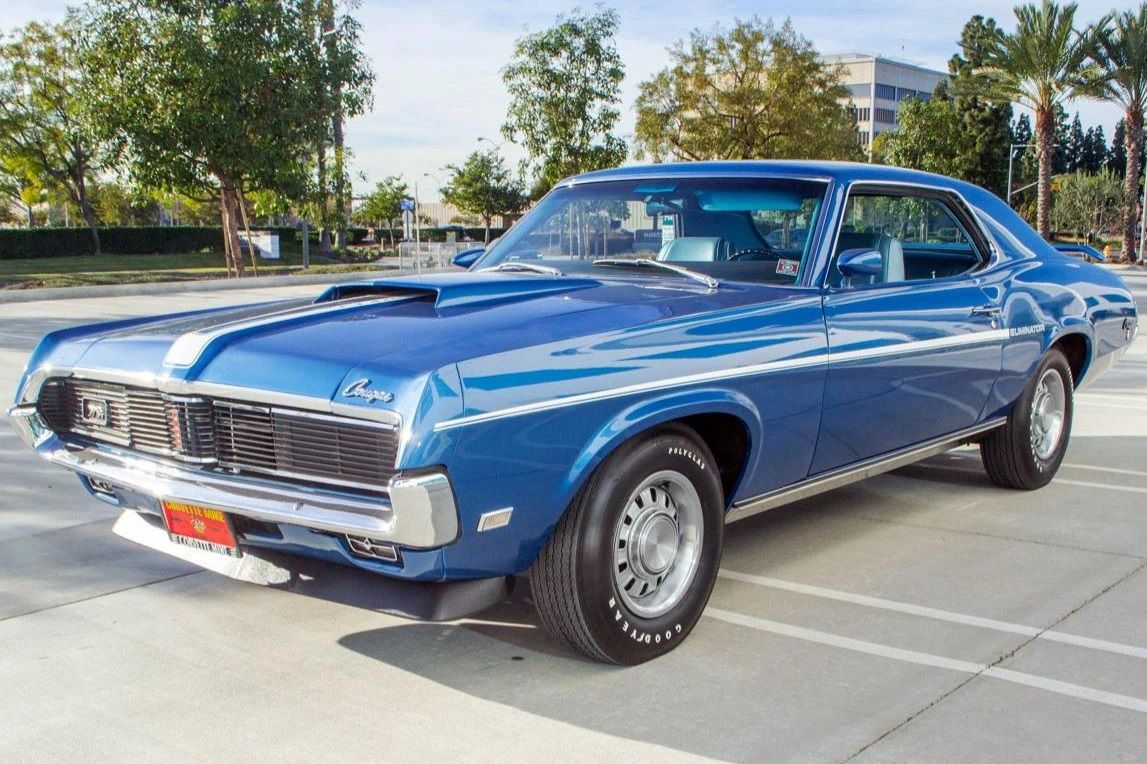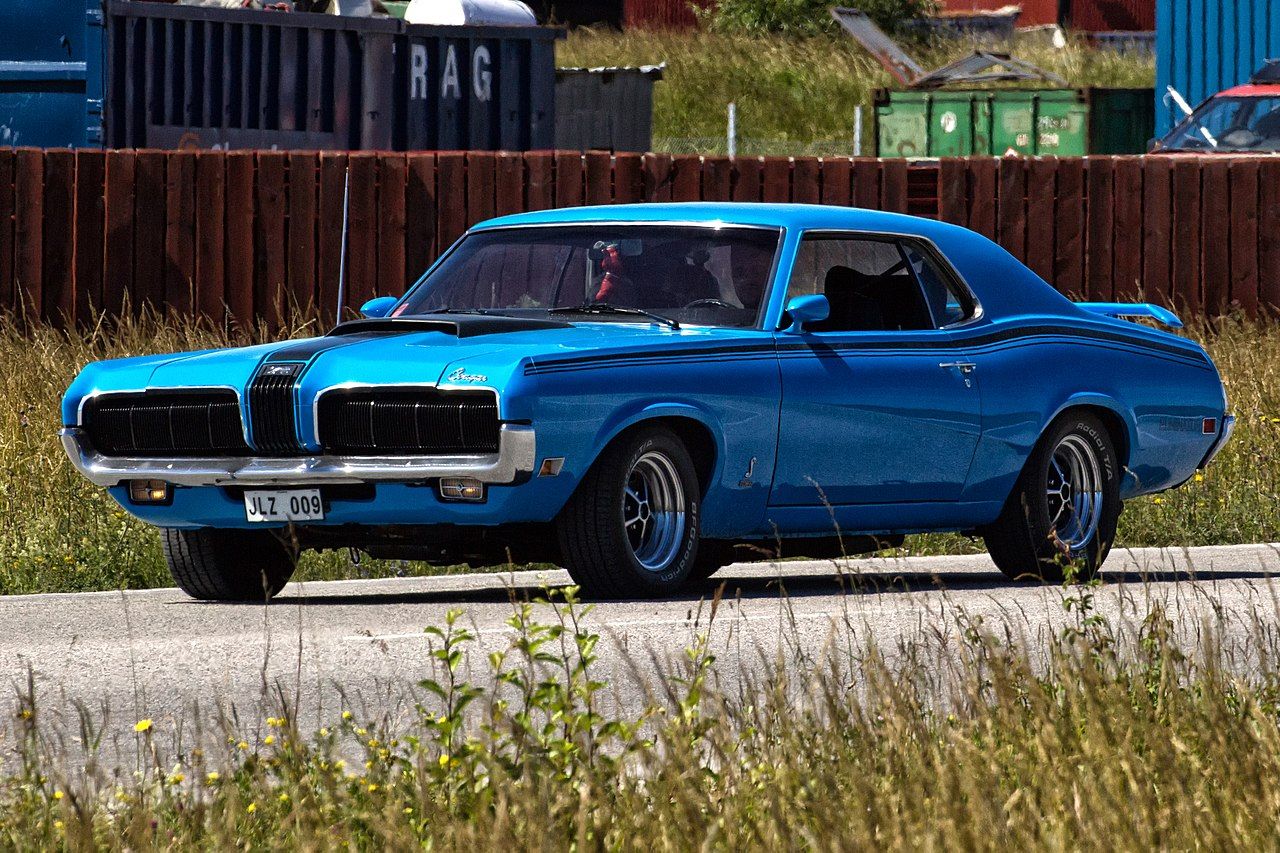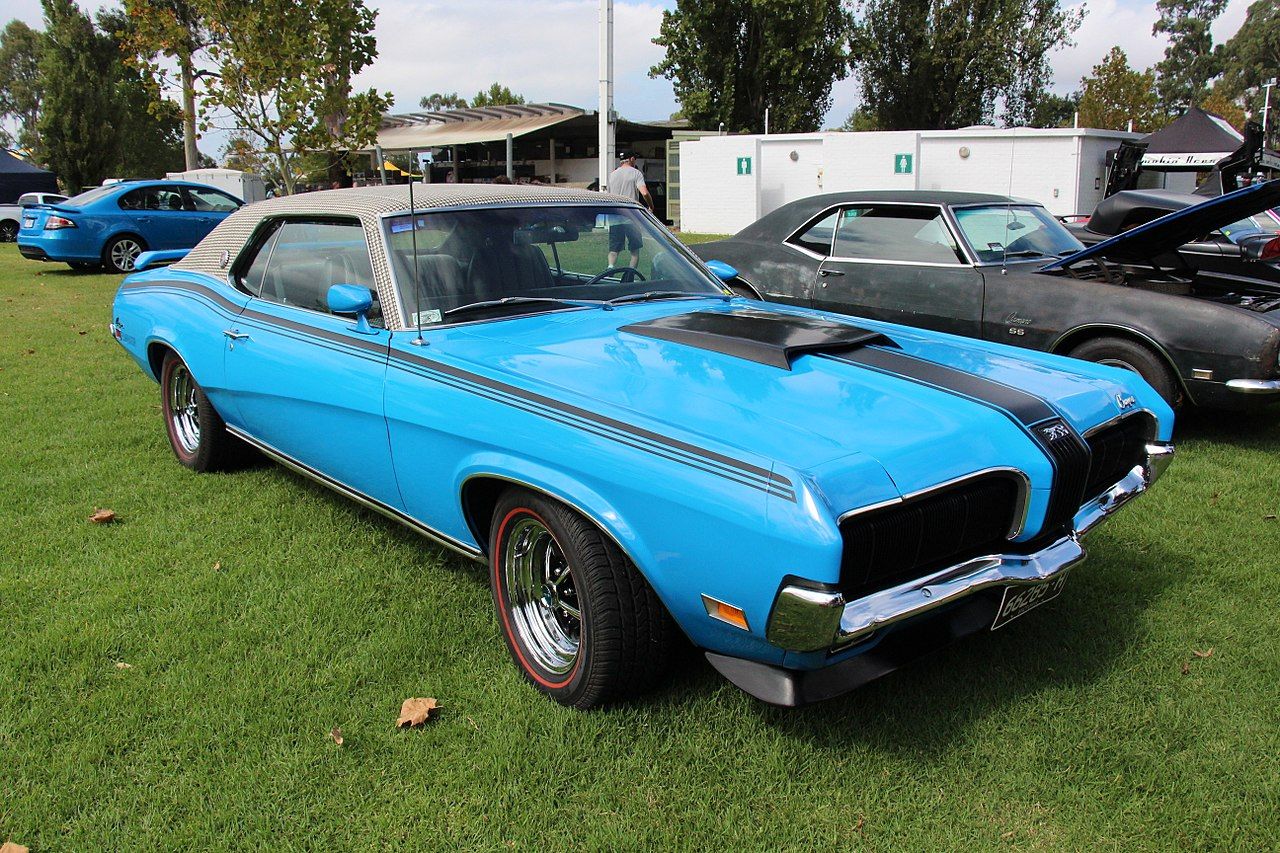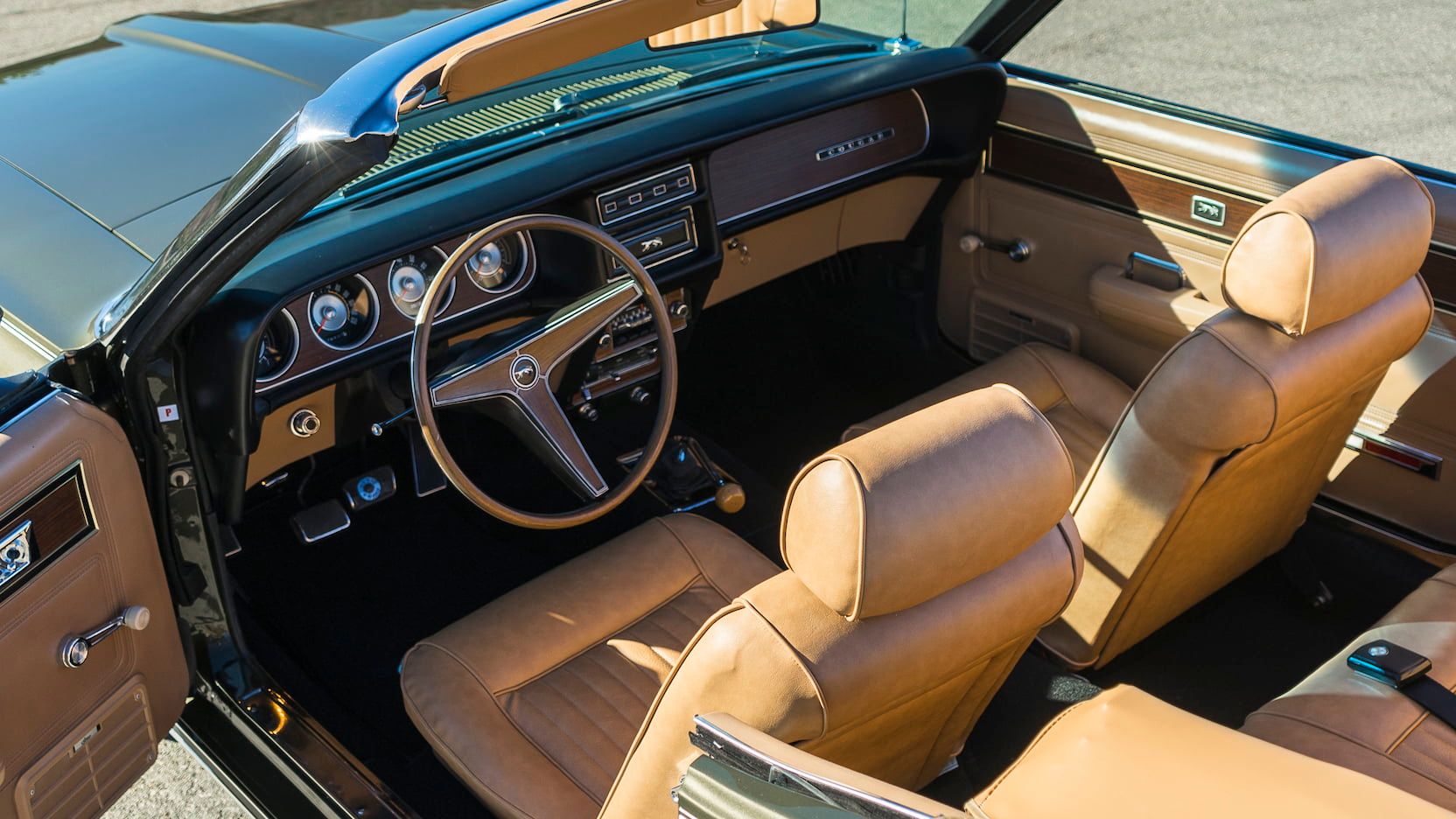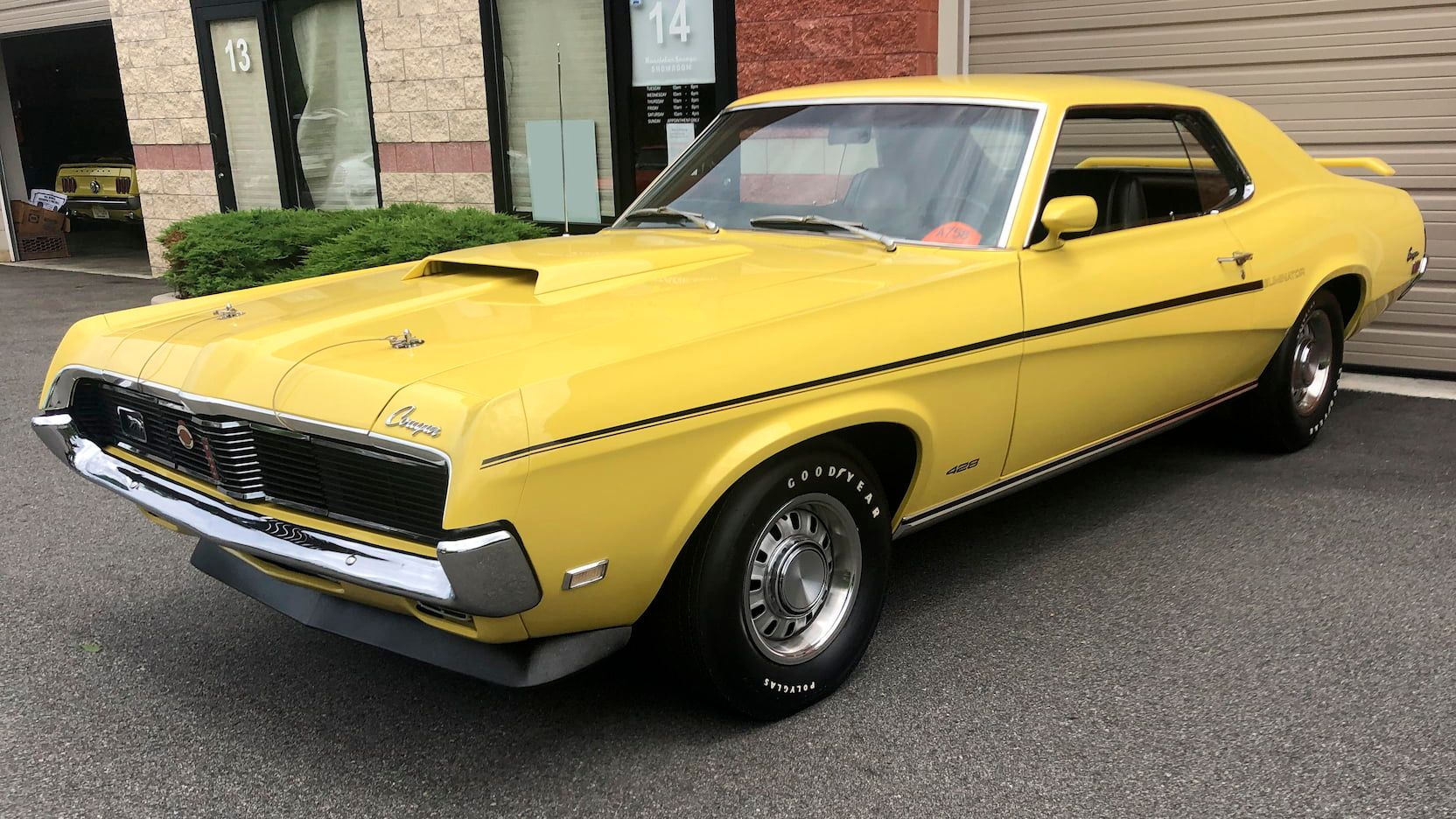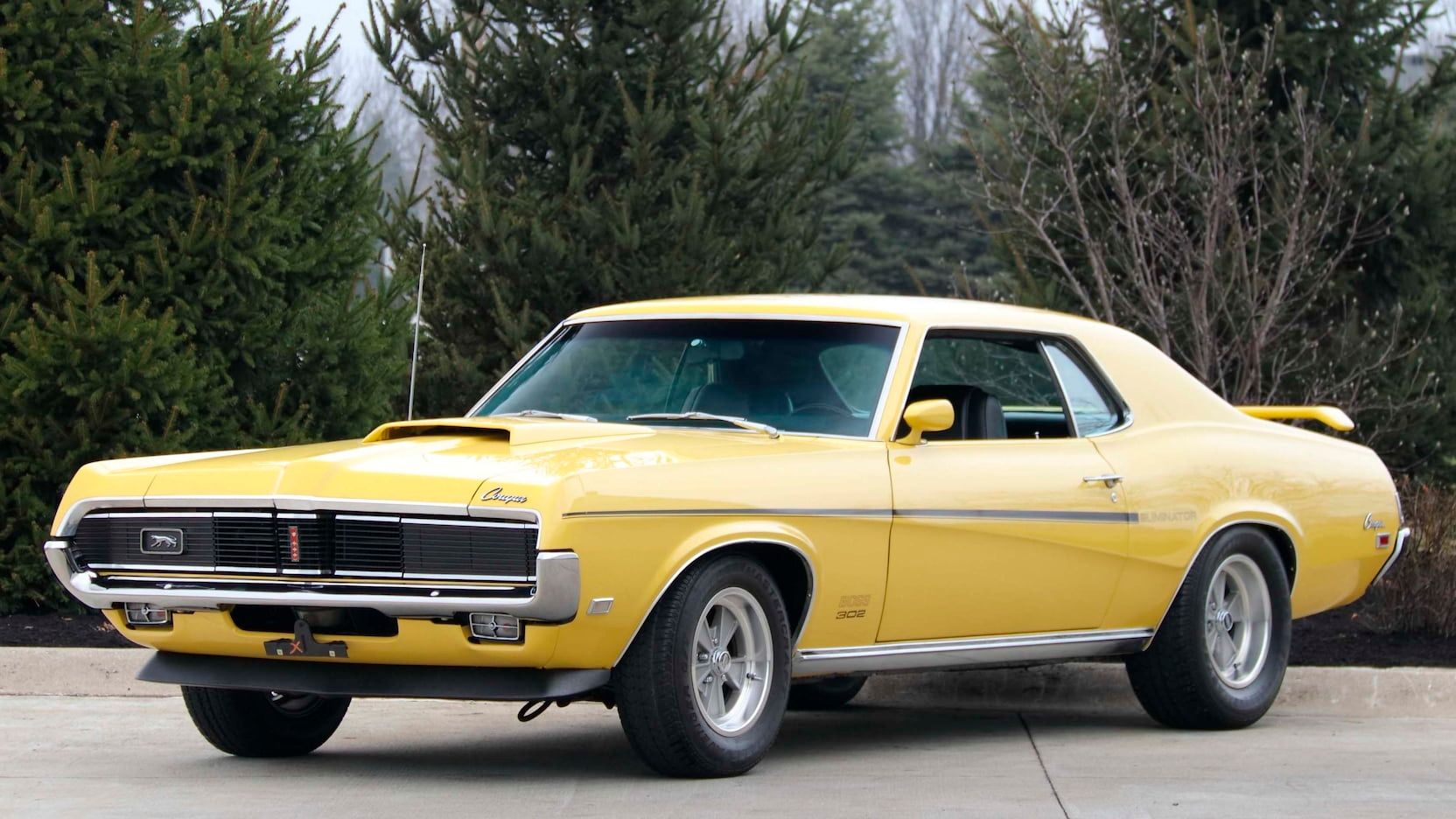The entire Mercury line of vehicles was designed and produced to be a step above the Ford line, but a step below the luxurious Lincoln models that Ford Motor Company introduced to the buying public. The 1969 Mercury Cougar Eliminator was one of the models that Mercury designed to compete in the muscle car genre that had exploded throughout the 1960s. It was a unique design that was created by Larry Shinoda, the man who also is responsible for the design of the Ford Mustang Boss 302. He also helped create the 1959 Chevy Stingray Racer and the 1963 to 1967 Chevrolet Corvette. He also did some work creating the Monza Corvair Spyder, which was a huge success within the industry of the automobile Fortunately, Shinoda decided to change companies for a while to help Ford with the new designs; otherwise, who knows how the Mercury Cougar Eliminator would have turned out.
Of course, that’s all history now, so the important thing is to understand that the Cougar and Mustang shared many similar parts and pieces, but each was its own unique car. Let’s dig a little deeper into the 1969 Mercury Cougar Eliminator to find out why it was the ultimate muscle car.
10 The Cougar Eliminator was Mercury’s answer to the Mustang
Side view of a 1969 Mercury Cougar Eliminator
The 1964 Ford Mustang design released for the 1965 model year was a bigger success than anyone at Ford could have imagined. This spurred other automakers to scramble to bring a version of the popular muscle car to market, including Mercury’s designers and engineers. The company had planned to offer an answer to the Ford Mustang as early as 1962, when engineers were diligently working on the T-5 project, which was the original design phase of the Mustang and Cougar. The Cougar didn’t begin production until 1966 for the ’67 model year, and like the Mustang, the Cougar sold far better than expected. In 1969, the Mercury Eliminator was added to the Cougar lineup to continue competing against the hot-selling Mustang, hoping to gain some of the sales success that the ‘Stang enjoyed.
9 The 1969 Mercury Cougar had a look of its own
Front and side view of a 1969 Mercury Cougar Eliminator
Because the Mercury Cougar took so long to bring to market, designers knew they had to do something different to make it look more appealing than the Mustang, which was the platform the production Cougar used. The best way to complete the task without redesigning an entire platform was to extend the wheelbase by 3 inches, giving the car a more aggressive stance. To accompany the concept, the front of the vehicle was given a darkened grille stretched from one headlight to the other, with a small square in the middle taken out to install the iconic “cat” symbol. The interior is where things really came into their own because it was designed to be a more luxurious option for the Mustang.
8 The Mercury Cougar Eliminator came with engine options
Driver’s side view of a 302 Boss in a 1969 Mercury Cougar Eliminator
An interesting fact to note about the 1969 Eliminator is that the rumors about the car being produced with a Boss 429 under the hood are true, but they were not available to the public. The only two ever built with the engine installed were for two racing legends, Fast Eddie Schartman and Dyno Don Nicholson. The idea of owning one of these monsters appeals to even the most laid-back car collector, but the good thing is that the Eliminator was offered with other engine options that could also rule the streets, like the Boss 302 (exclusive). the Mercury Cougar Eliminator) and the 428 Cobra Jet and the Super Cobra Jet.
7 The Eliminator with the 428 Cobra Jet needed an upgraded suspension
Front and side view of a 1969 Mercury Cougar Eliminator
Slipping a big block under the hood of any car is not something any automaker takes lightly. It’s never as simple as installing the motor, hooking up the transmission and hoping for the best. The torque figure produced by engines like the 428 Cobra Jet (around 440 lb-ft of torque) can easily break driveshafts, break suspension parts, and twist the frame to the point of make the car unsafe to drive. Because of this, the 1969 Mercury Cougar Eliminator that received the 428 CJ/SCJ automatically received a heavy-duty suspension system and reinforced frames. It consisted of installing upgraded dampers and springs, a thicker anti-roll bar and staggered rear shocks. All in hopes of improving performance and decreasing breakage.
6 Super Cobra Jet was an option for the Mercury Cougar Eliminator
Front and side view of a 1969 Mercury Cougar Eliminator
One of the more overlooked upgrades that were available when ordering the Cougar Eliminator was the fact that the 428 Cobra Jet engine could be upgraded to the even more beastly 428 Super Cobra Jet. Once that little box was ticked on the order form, the engine received stronger connecting rods, a cast iron intake manifold and an external oil cooler that helped keep the oil cool when the engine was at RPM higher That might not seem like a substantial difference in build, and in terms of engine power, both were listed by Ford to push 335 horsepower. However, the difference could be seen in drag racing, which is why the Super Cobra Jet was a worthy engine to get if the 1969 Cougar Eliminator was used for any type of racing, in or outside the official drag strip.
5 The Cougar transmission was an option that was paired with the chosen engine
Front and side view of a 1969 Mercury Cougar Eliminator
Muscle cars built for total horsepower and torque can’t simply depend on the engine under the hood. Everything must come together for the vehicle to perform at its highest level. For example, the gear ratios at the rear will be useless if the torque is not transferred to the drive tires in the most optimal way. The bigger the engine, the harder the transmission will have to be. Three-speed manual and Select-Shift automatic were available for cars with the 302, 351 and 390, with the four-speed manual as an available option. The three-speed manual was dropped as an option for any 428 car, and the 302 Boss car was only offered with the four-speed stick shift.
4 The mercury remover had underestimated the power numbers
Front and side view of a 1969 Mercury Cougar Eliminator
A common theme seen throughout the 1960s and early 1970s was undervaluation of engines by all automakers. The reason for this is that car manufacturers understood that the cost of insurance for their consumers increased as the power of the car increased. On the other hand, many experts and critics claim that it was to ensure that the vehicles that the companies used to compete on the NHRA and NASCAR circuits remained under the established requirements. Either way, the 1969 Mercury Cougar Eliminator with the 428 Cobra Jet/Super Cobra Jet was officially rated at just 335 horses, but testing has shown that number to be more like 365. If the right headers are added in the mix, the 428’s power could even reach 400 hp or more.
3 The Cougar Eliminator was designed with a European touch inside
Driver’s side view of the interior in a 1969 Mercury Cougar Eliminator Convertible
Before the Cougar became a marketable car, Ford Motor Company promised the public that the new car would look like a European car, but have all the qualities of an American ride. The exterior styling concept took this statement into account, but since the platform was based on an already popular American car, designers looked to the vehicle’s interior to create a European appeal. Once the door is opened, the buyer would feel as if they had entered another country, with the simulated wood grain dash and black and white design of the instrument panel and gauges giving a European touch that is not can ignore
2 Eliminator package option and Eliminator decoration package
Side and front view of a 1969 Mercury Cougar Eliminator
When ordering the Eliminator, the buyer had two package options they could choose to add to the 1969 Cougar. The first was the Eliminator package option, which was an upgrade to the high-back bucket seats, performance rear axle, body stripes and decals, remote left mirror, hood or Ram Air system, steel wheels, blacked out grille, rear wing, front spoiler, Ralleye clock, trip odometer and a unique instrument panel with a tachometer included. The Eliminator Decor package was more about looks, adding curb moldings, a decorative steering wheel, padded interior moldings, door-mounted courtesy lights, custom door trims, and rear seat armrests.
1 Cougar Eliminator is rare due to low production numbers
Front and side view of a 1969 Mercury Cougar Eliminator
The main point of the Mercury Cougar was to give the Ford Corporation a way to have an offering that was between Ford and Lincoln, which may be one of the reasons why the 1969 Mercury Cougar Eliminator had such low production numbers. Sales of the entry-level Cougar were high, so high in fact that over the years, it ended up being one of the best-selling Mercury models of all time. As for the Eliminator, the 2,411 cars produced in 1969 were just a drop in the bucket when you consider that there were just under 300,000 Mustangs sold in ’69 and over 450,000 Chevelles for the ‘year.





